The Designest may receive compensation from companies, products, and services featured in this publication. For more details, please refer to our Affiliate Disclosure page.
In 2013, a pair of design studio dropouts and a development team lead got together to create Readymag — initially, a highly visual tool for making online zines without coding. Over the next ten years Readymag pivoted to a full-fledged design tool for websites, landing pages, digital editorials, portfolios and all things online.
Along with working on Readymag, the team has been using it to craft digital editorials on design-related and social topics. Fueled by passion for design and beauty, this has become a powerful way to promote the values Readymag stands for, demonstrate and crash-test its creative capabilities, get noticed by the professional community and attract like-minded people. Below is the story of Readymag as viewed from the prism of its in-house digital longreads.
Hailed by Geeks
Readymag was born as the brainchild of designer Anton Herasymenko, who was inspired by the release of the iPad in 2010 and the rise of the online editorial format. “Most of those projects attempted to straightforwardly translate static print layouts to the tablet, which looked unsavory,” recalls Readymag co-founder Diana Kasay. “Anton got the idea to create a tool that enables users to make digital fanzines. In this way the name Readymag appeared—it was actually an abbreviation from ‘ready magazine’.” Diana got to know Anton from her previous work in a design studio, where she was a manager.
Anton and Diana were joined by Kirill Danchenko, who undertook development. While preparing the first MVP, the team was releasing beautiful teasers at the Product Hunt website that would win the hearts of design geeks and early technology adopters. When Readymag was publicly released, it earned the slogan ‘Printing press of the digital era’. The cofounders expected that people would use it to create personal online pages—something in between blogs and visual magazines telling their life stories.
Dieter Rams’ Design Principles: Slick and Static Manifesto
“We all adore fanzines. In the early days of Readymag they were all the rage. We all brought fanzines from each foreign trip, the Readymag office was glutted with them,” Diana recalls. So, the idea of crafting digital editorials in-house came naturally.
The very first such thing Readymag laid out was the ‘10 principles of good design’ manifesto by Dieter Rams, an industrial designer who for years took the creative direction of the development of the German brand Braun. Quite simple, and almost static, even in 2023 the piece looks slick and up-to-date with its uncluttered design and bold typography. “Along with its beauty, this project showed very good performance: for years and years it’s been bringing us new registrations into the product,” Diana adds.
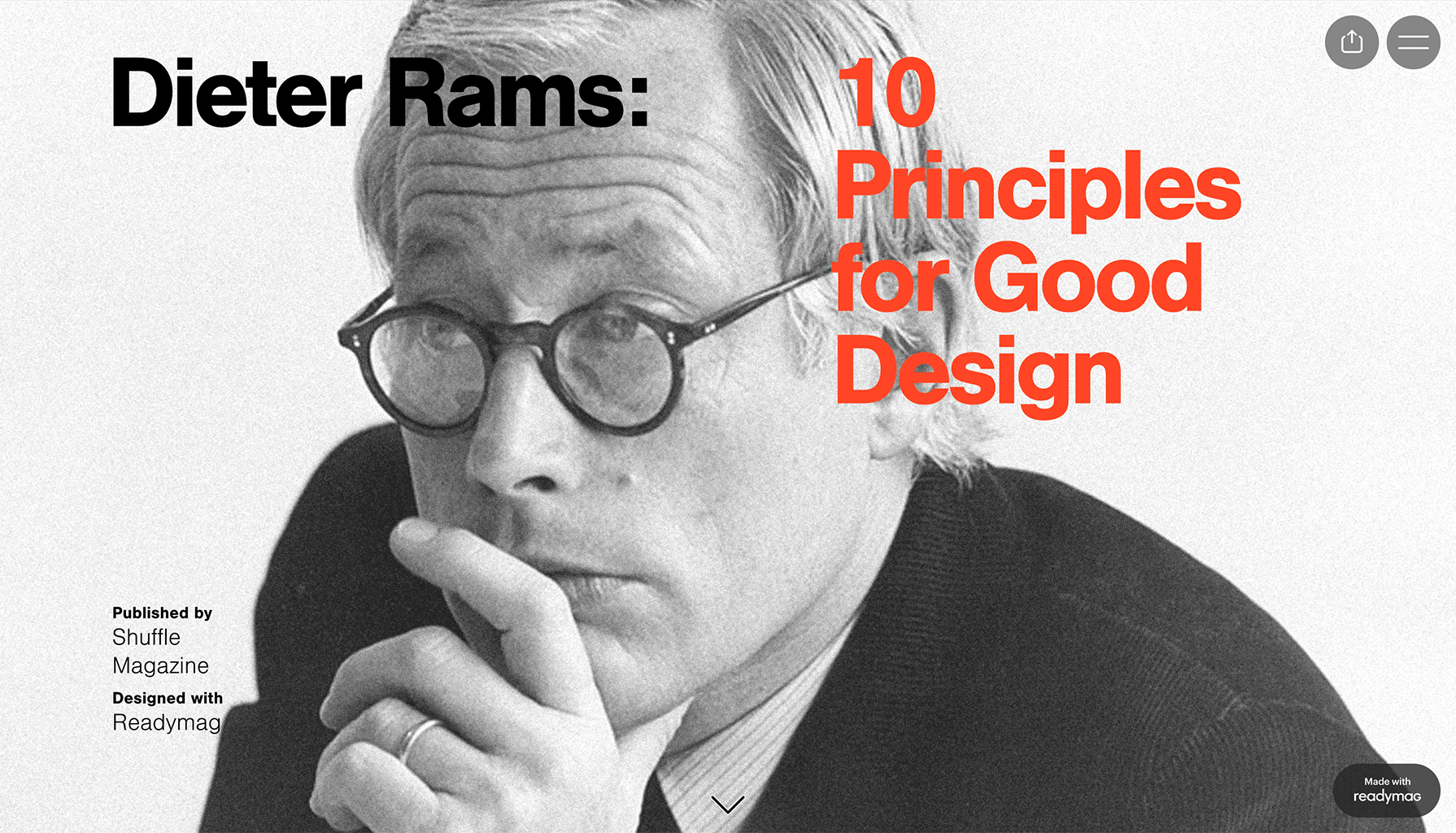
Enso: Experimental Magazine With Longer Articles
In 2015-2018, Readymag released Enso — an online magazine exploring creativity and inventiveness through the stories of iconic design objects and their creators. The idea belongs to Anton Herasymenko. “We wanted to uncover topics that are interesting to us and aimed to demonstrate the power of Readymag along the way,” Diana explains.
Among others, publications feature Charles and Ray Eames, Walter Gropius and Peter Behrens. The design of each magazine issue is quite different, yet, in all of them on-scroll animations are used as a means of visual storytelling that turn the narrative into a more multifaceted experience.
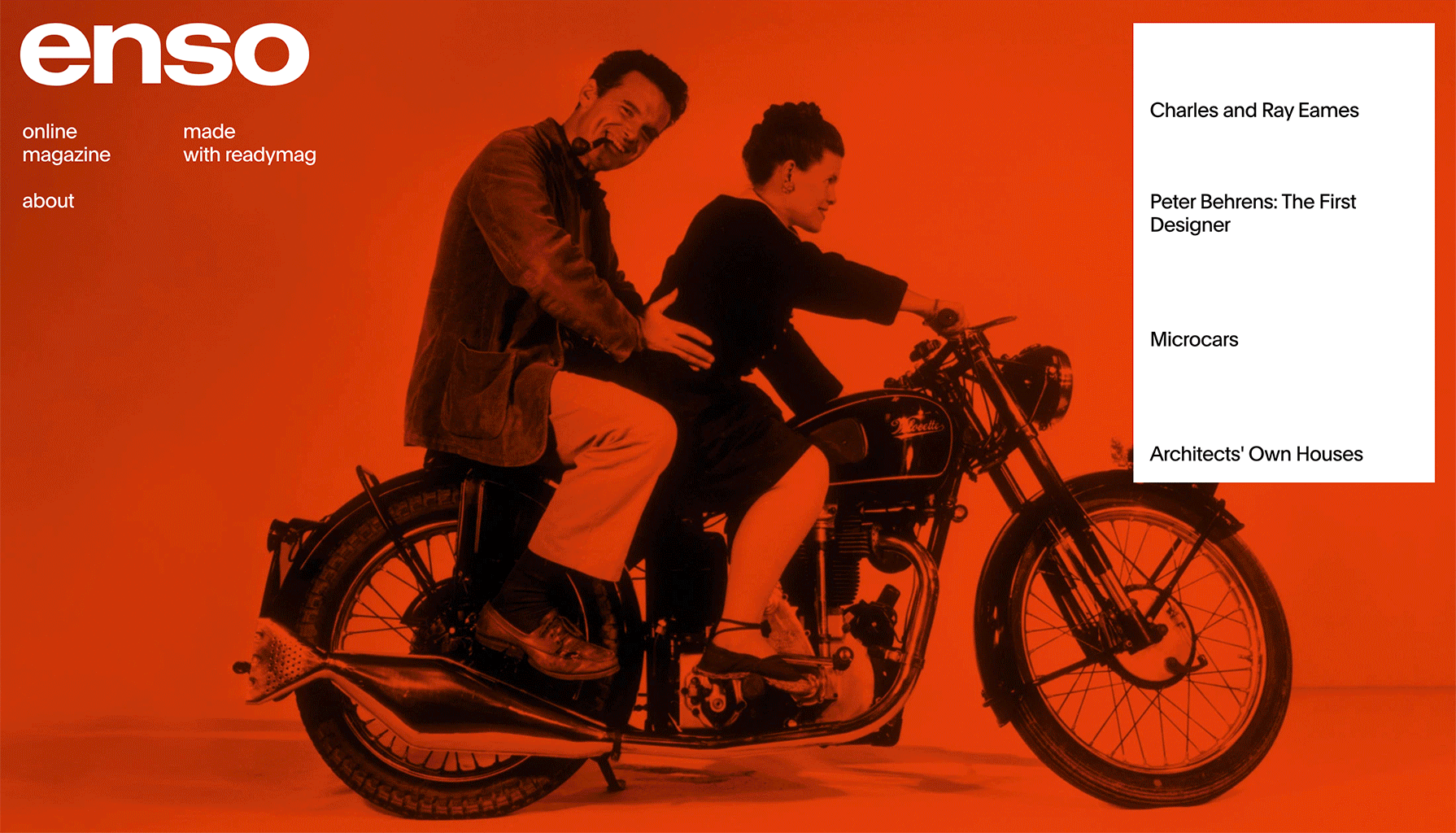
Lubalin 100: Advent Calendar For a Type Master
In 2018, Readymag released Lubalin 100 — a website celebrating the centenary of influential American graphic designer Herb Lubalin, who is commonly referred to as ‘the father of conceptual typography’. This project was carried out in collaboration with The Herb Lubalin Study Center in New York, they scanned and shared materials from their archives, explains Diana, who oversaw the production process.
The website, which is organized like an advent calendar, went online one hundred days prior to Lubalin’s birthday, day-by-day revealing his posters, logos, book covers, sketches and print advertising, along with stories from his life and family archive photographs. The index page includes a headline that appears on-load, plus a page menu organized in the form of calendar: click on a number to be redirected to a certain page.
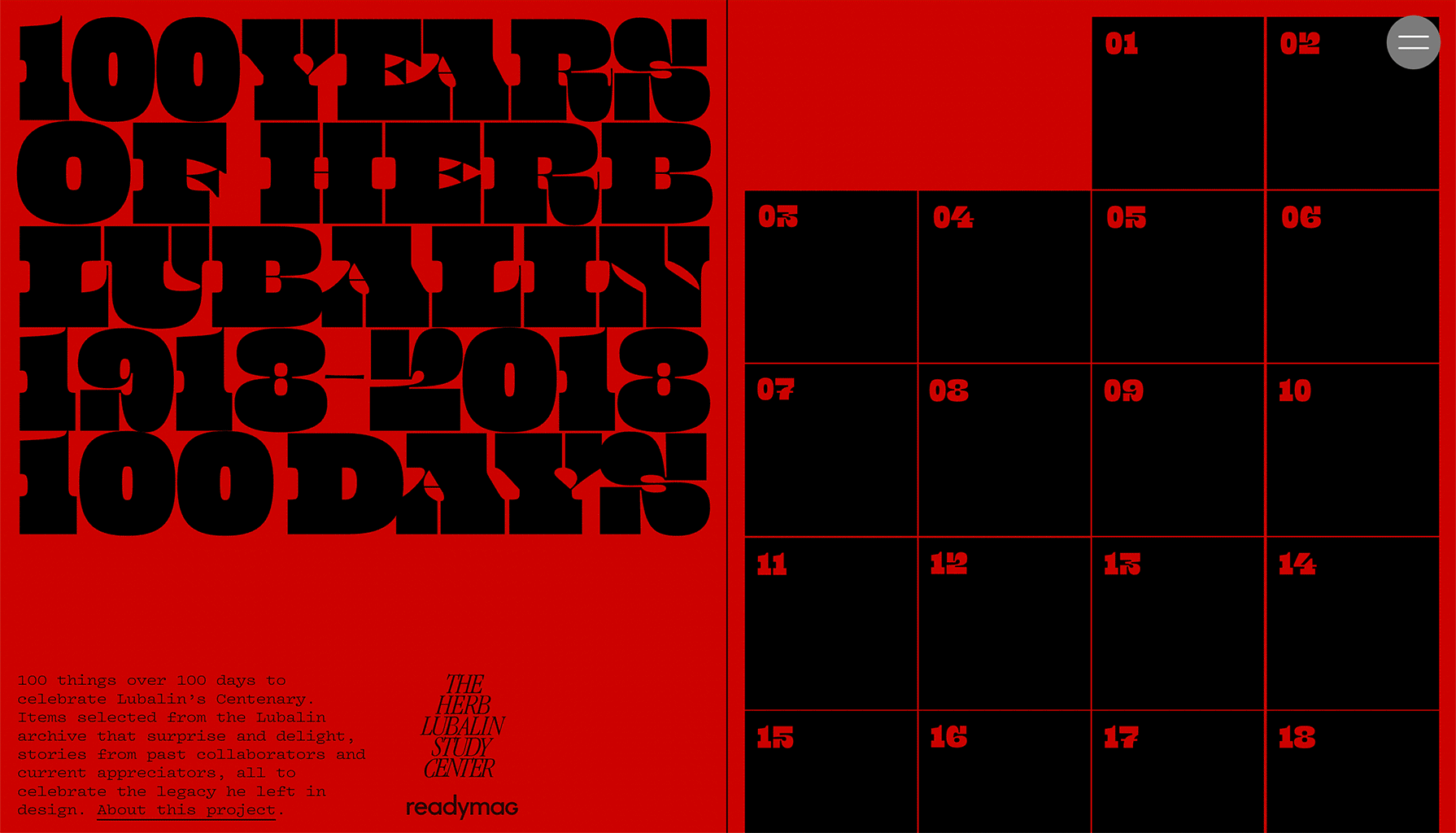
Design Almanac: Unscrambling The Basics of Graphic Design
Along with Enso, Readymag began work on Design almanac — a series of in-depth articles covering key design fundamentals: typography, grid, color, and animation, all organized into an online primer. “After the release of Readymag we noticed that there were quite a big number of user projects that looked unsavory. After discussing this in our team, we came to the conclusion that web designers for sure need to know the basics of graphic design, so we decided to carry out this educational project,” Diana explains.
The content was created in collaboration with seasoned design professionals, including art director Zhdan Philippov, creative consultant Michael Wolff, letterpress typographic designer Alan Kitching, artist and animator Nicolas Ménard and Google motion designer John Shlemmer.
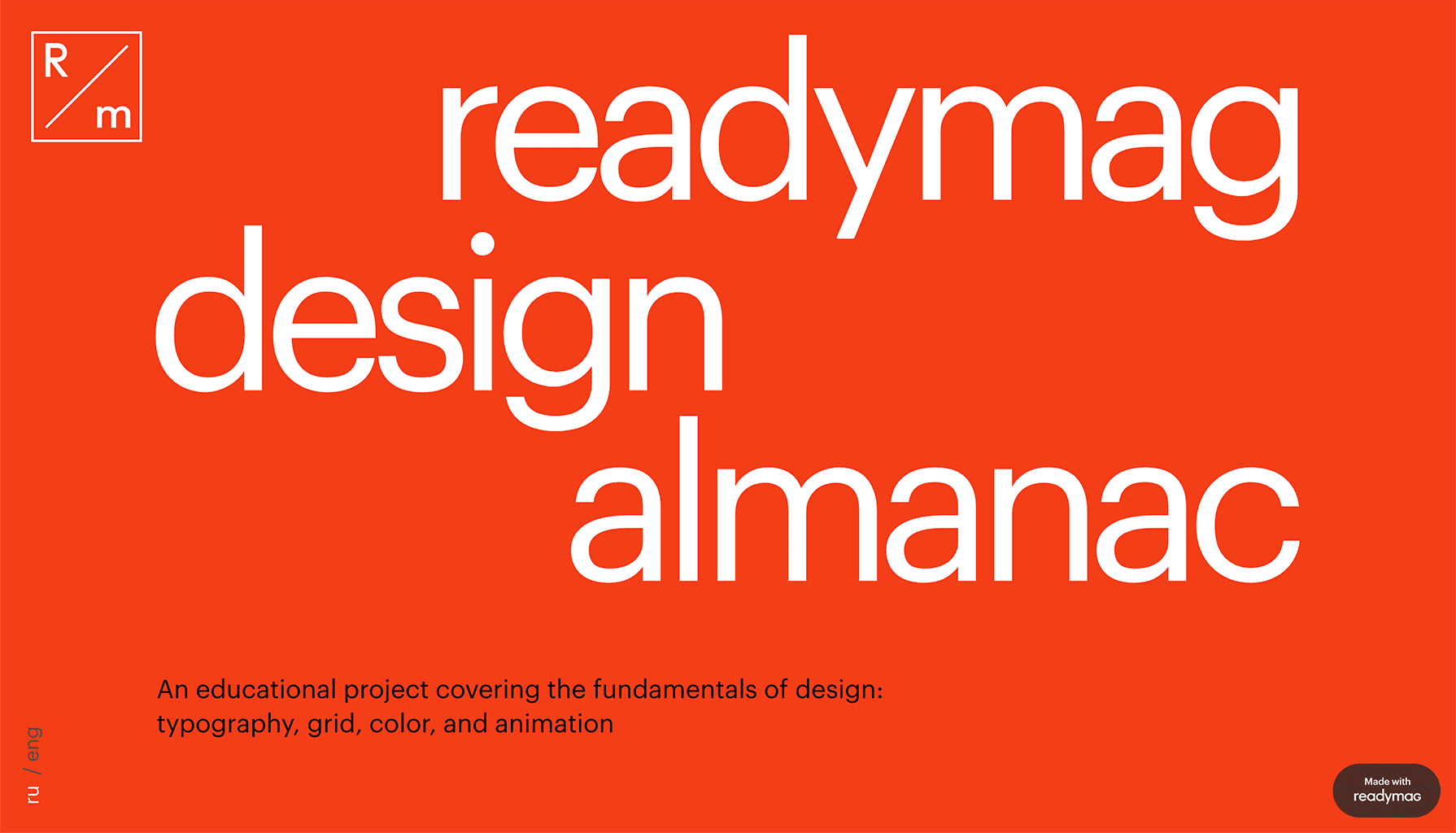
Design Stories Archive: Tribute to Lesser-Known Influencers
In 2017-2018 Readymag released Design Stories Archive — a series of 23 multimedia editorials created as a tribute to influential but lesser known 20th-century creatives who shaped modern design culture. Personalities include (among others) Carlo Molino, Kazumasa Nagai, April Greiman, and Rosmarie Tissi. There’s also one installment comparing the development of two world-renowned design schools that existed at the same time—Bauhaus and Vkhutemas. The series garnered more than 50,000 views demonstrating widespread appeal and resonance.
“From the beginning we aimed to maintain a steady workflow and publish new installments regularly. To accelerate the work of our designers and writers, we decided to introduce a unified narrative structure for all issues,” Diana explains. She invented the idea of the series and took the role of Editor-in-Chief. Most issues in this project are laid out with one template. That’s one of the features of the tool: users can turn pages into templates and re-use and customize them later to speed up their workflow. The Readymag team got so many questions about the timeline animated on-scroll that they decided to make a video tutorial about it and also make the template publicly available.
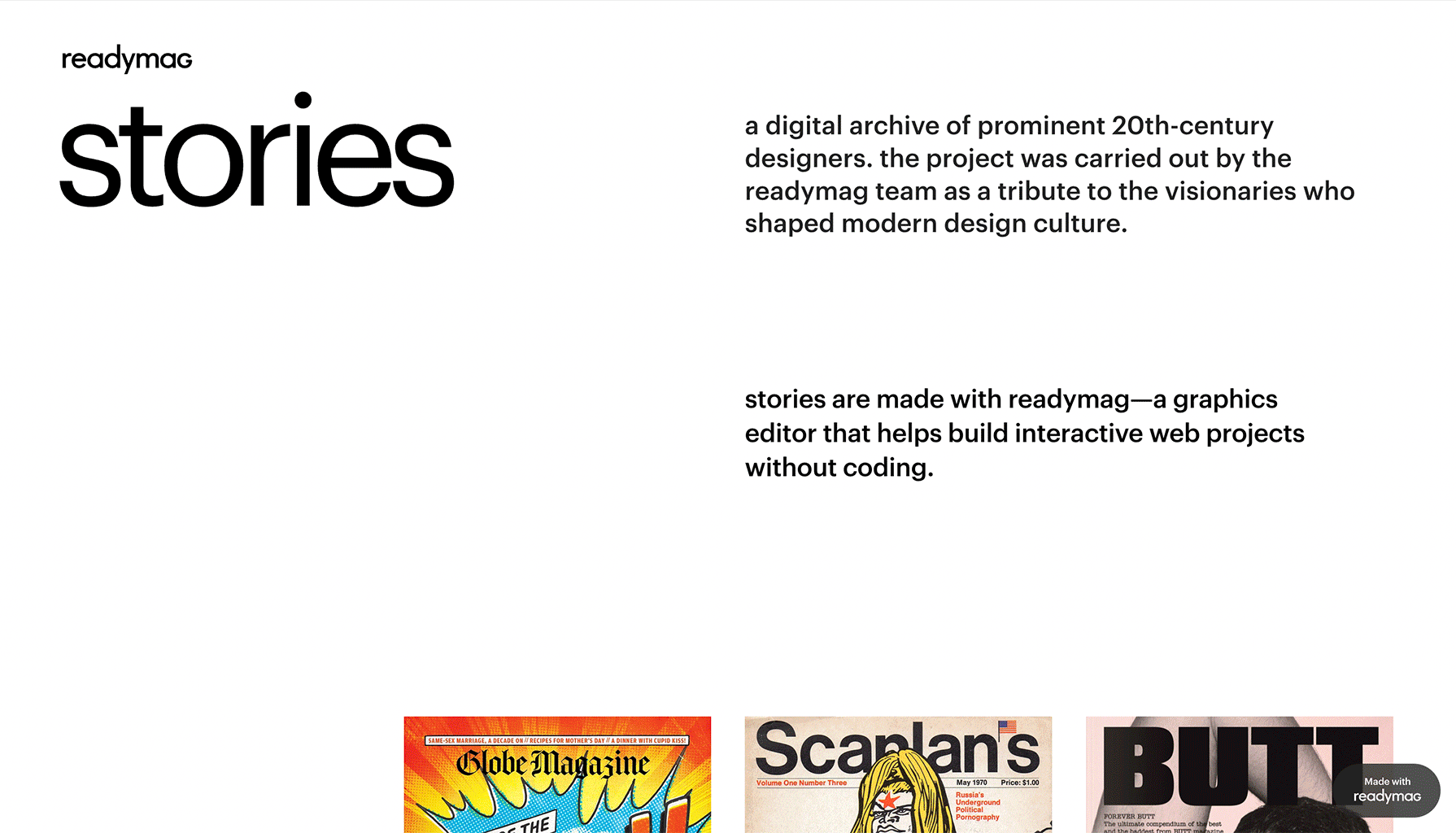
Designing Women: A Research Challenging Gender Imbalance
In 2017 Anton and Kirill left the company, Diana became Readymag’s CEO and gave birth to a child. Instead of searching for venture capital, she chose to develop Readymag as a sustainable business relying on inner steady growth.
The challenges she faced during that period inspired Diana with the idea of Designing Women —research into the ongoing gender imbalance in the design industry. “As a woman who juggles business, family, motherhood, personal and social life, I know that it’s a colossal load,” Diana says. “And it’s become absolutely impossible to remain silent about it.” The research was released in 2019: “At that point in time the company not only overcame the growth crisis, but we became mature enough to carry out our first social project. So, the development of the feminist agenda at Readymag began.”
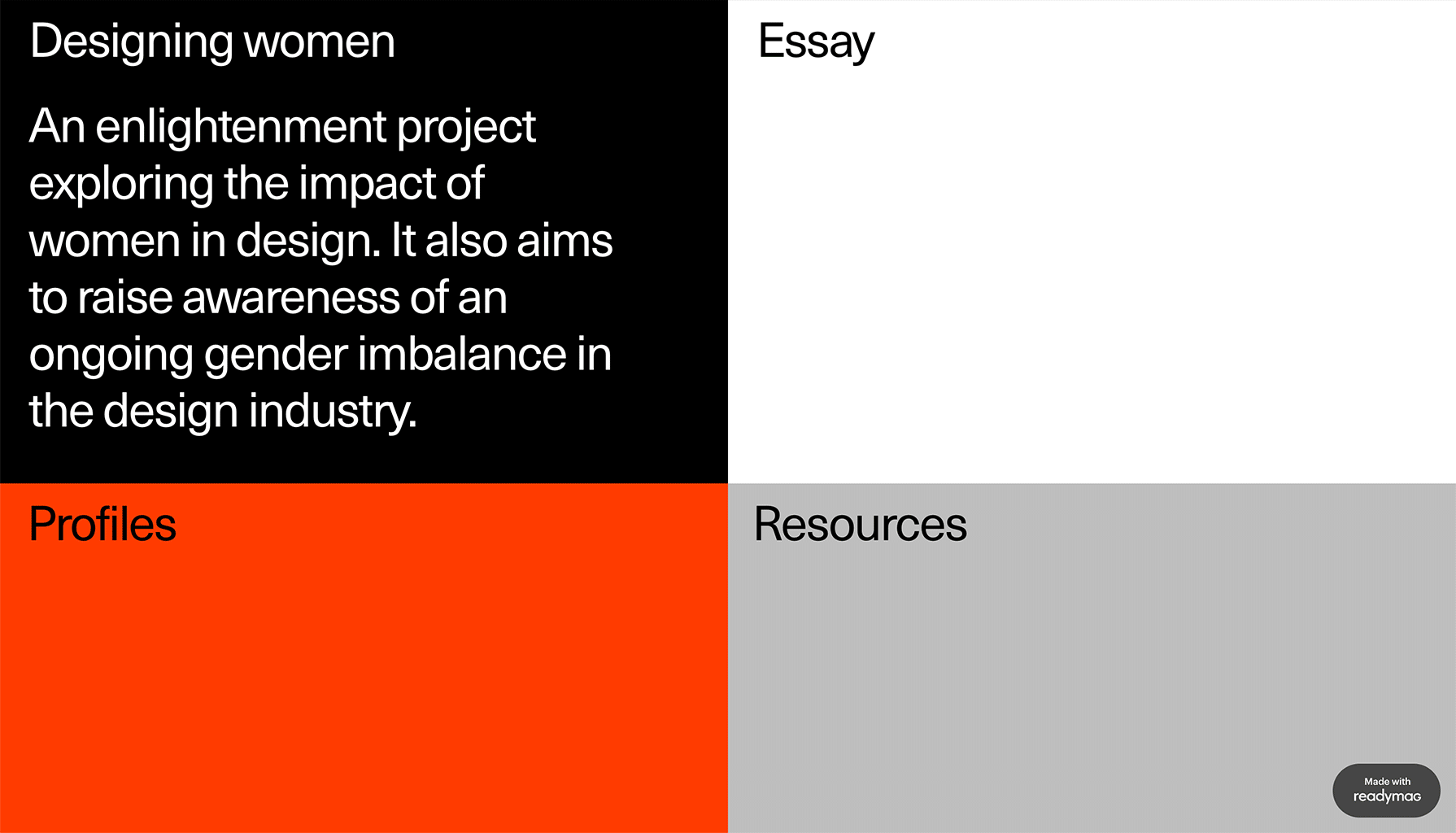
Structurally, the research consists of three independent sections—an essay exploring the current status of women in design, a timeline telling the stories of trail-blazing female designers of the past, and a list of feminist resources for self-study—plus a tessellated index page acting as an entry point and navigation menu. “I believe information based on facts, statistics, and the perspectives of design theorists and practitioners is the best basis for constructive discussion and positive change,” Diana explains.
“While gathering information for the ‘Profile’ section, we became even more aware how frequently women were overlooked in design history. It was difficult, sometimes close to impossible to find documented proof of their involvement or leadership in a certain project. Their work would be officially attributed to the design studio they worked for, with credits nowhere to be found. One of the goals we had was to rectify this injustice,” Readymag Marketing Direktor Alya Datiy adds. The project was welcomed by the public, triggering a bigger discussion about the gender imbalance in the design industry.
Daily Routines: Interactive Narration About Creativity
In the midst of the COVID-19 pandemic, Readymag released Daily Routines — an illustrated editorial exploring the lives and work habits of five modern designers around the globe. Each chapter includes a timetable, playlist, inspiring ideas and links, a story about fighting the fear of a blank page, advice on how to relax and reset, and some sharp observations about design work.
The routines of the heroes set the structure for the whole project: playlists are part of the menu, and hotspots contain pieces of the day-to-day picture. From a design viewpoint, one of the most important features in this project are ‘routine meters’ constructed with the Shots widget — a sequence of animated frames controlled by the user via scroll or mouse movements.
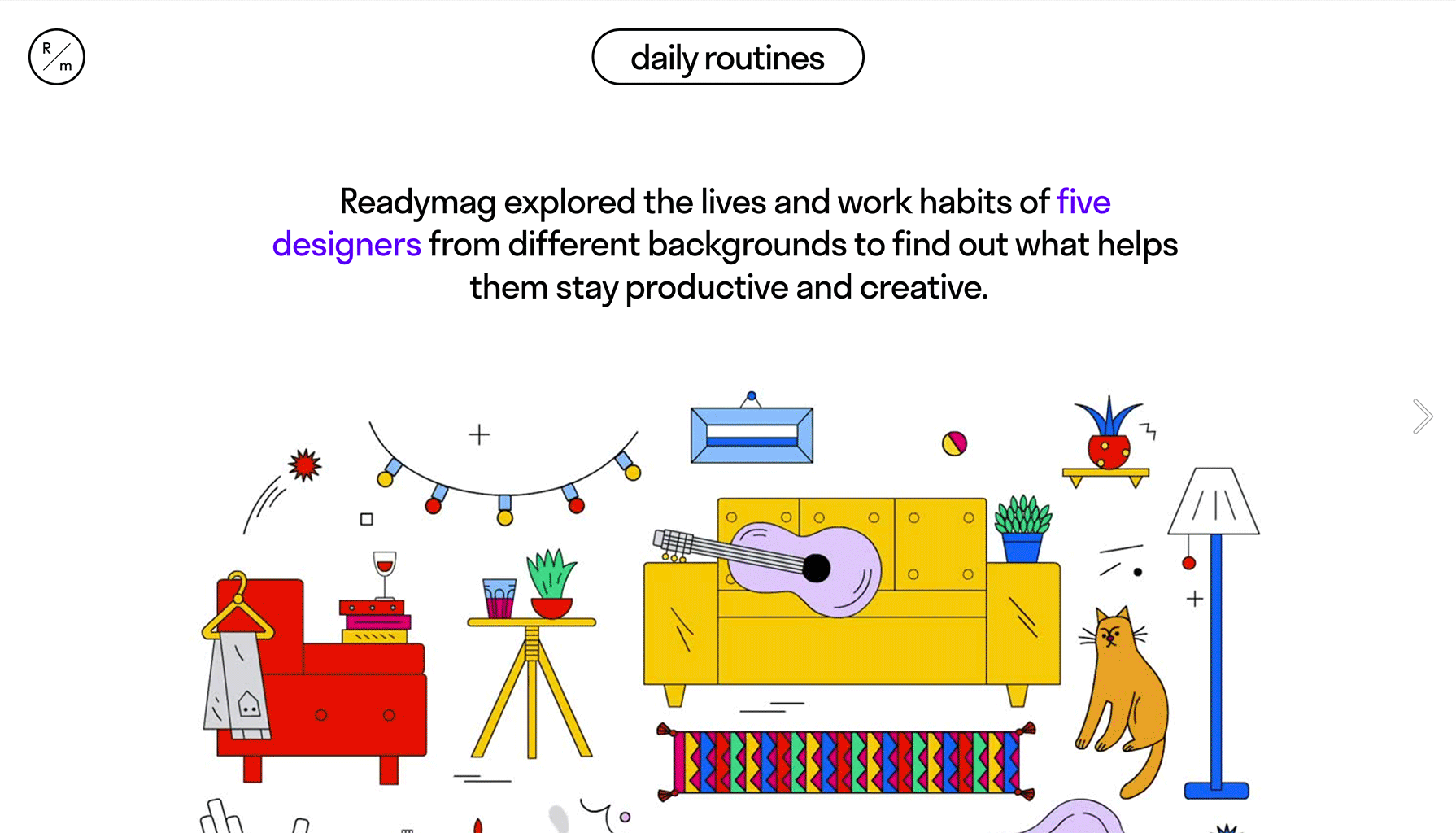
Faces Behind Typefaces: A Partnership With TDC
In 2022, Readymag collaborated with Type Directors Club to create The Faces Behind Typefaces, an editorial celebrating the 75th anniversary of the club by featuring stories about Paula Scher, Paul Rand, Adrian Frutiger and other renowned TDC medalists.
“Our passion for typography shines through everything we do: Readymag’s interface, font library, typography presets and the projects and editorials we produce. Naturally, we’ve been eager to collaborate with the Type Directors Club for a while. When the opportunity presented itself—the announcement of this year’s TDC Medalists – the concept came naturally,” says Alya Datiy. “We wanted to convey how modern perspectives, as well as work ethics, could be rooted in the legacy of design figureheads and shed light on exceptional up-and-coming designers,” adds Tatiana Kovalchuk, Editor-in-Chief.
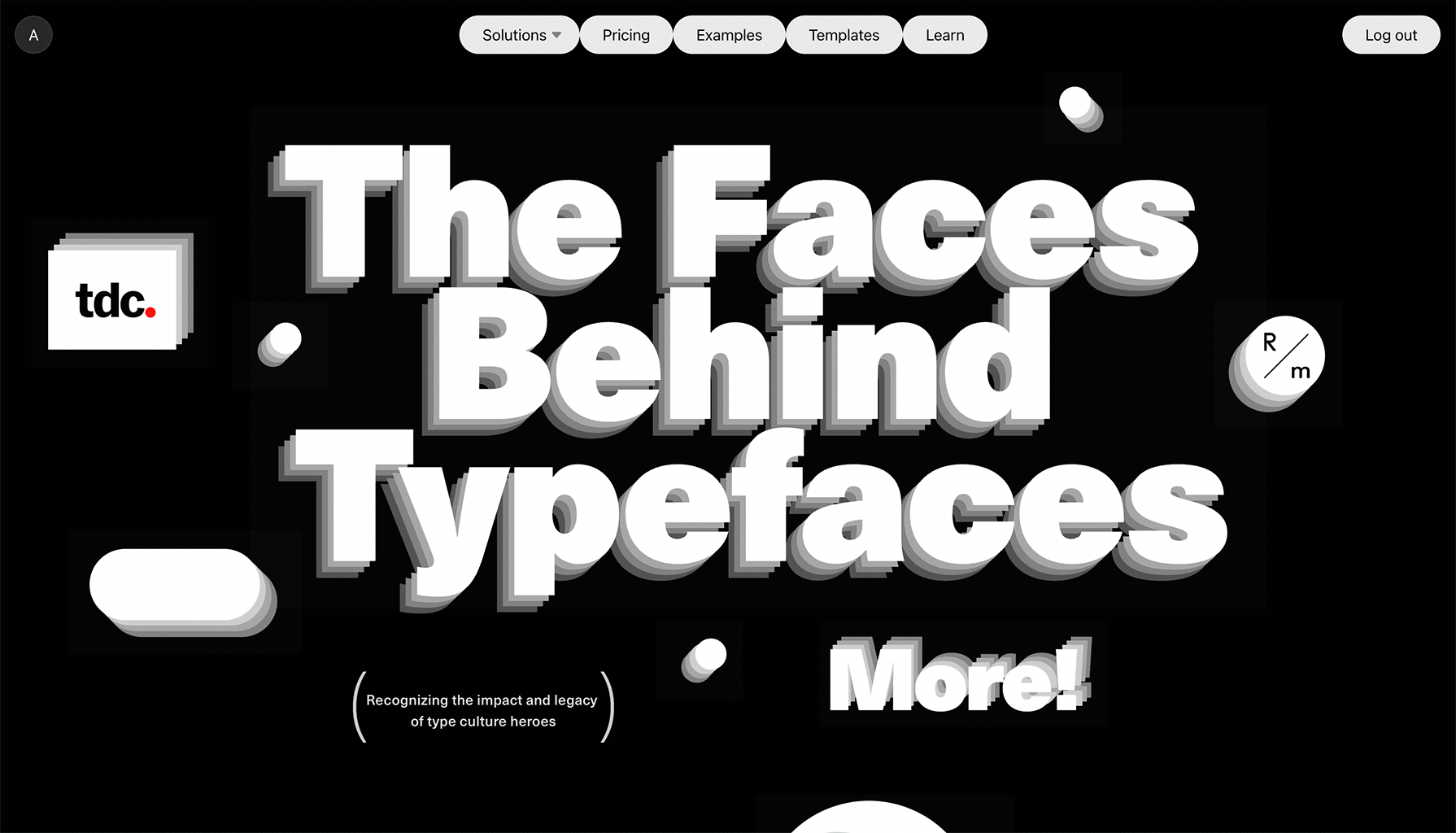
The project was featured by The Communication Arts, Creative Boom, Femme Type, and Graffica other design media, secured a nomination for the Webby Awards, and achieved the remarkable feat of becoming the Gold Winner in the Website Design Category at the Indigo Awards 2023.
Playground With Endless Design Scenarios
“From the moment Readymag appeared, the innovative nature of the product was obvious. Now, we’re distinguished from other tools by our focus on design-centered experience. With Readymag, you immerse yourself in an environment that inspires you and stimulates your creativity,” says Diana. “Over the years, Readymag has remained a playground where the most incredible ideas come to life. The web still has a lot of room for statements—and Readymag gives you the freedom to make whatever you want without coding, see the results instantly and achieve a high level of precision in visual language.”
Over the past decade, Readymag has proved that online brand editorials are a powerful tool to win target audience, get a voice and build reputation.
“Everything is moving toward automation,” Diana summarizes. “This is an obvious trend, and it’s clear that Readymag will move in the same direction. But I have a feeling that it will continue to occupy a niche for design geeks and people for whom aesthetics is very important, for whom we are not just a tool, but part of the cultural code.”
Now, ten years after the launch, Readymag is a powerful and easy design tool that enables creatives to work alone or in teams and implement their vision unbounded by the limitations of the web. Register now and try it for free.
